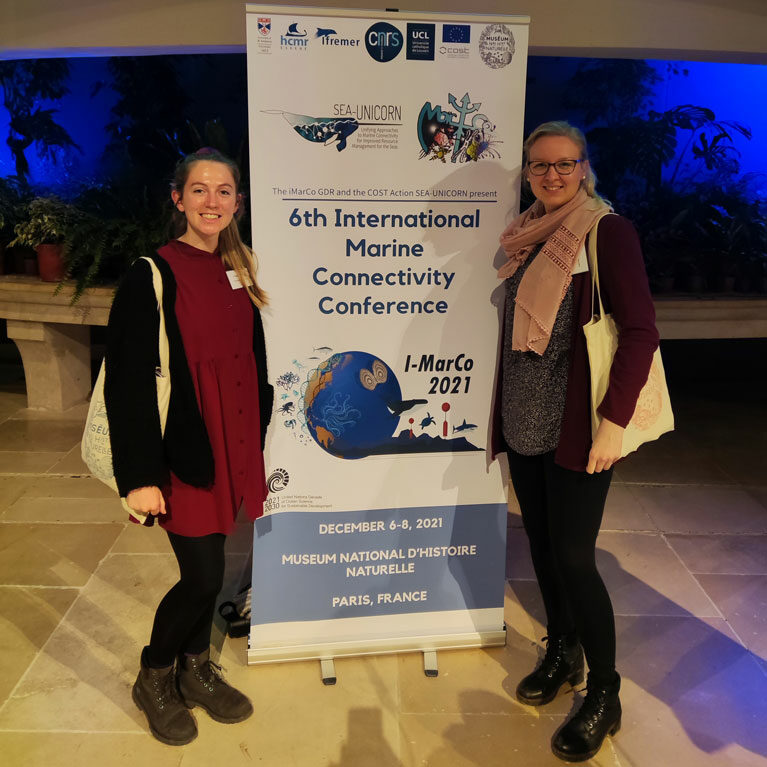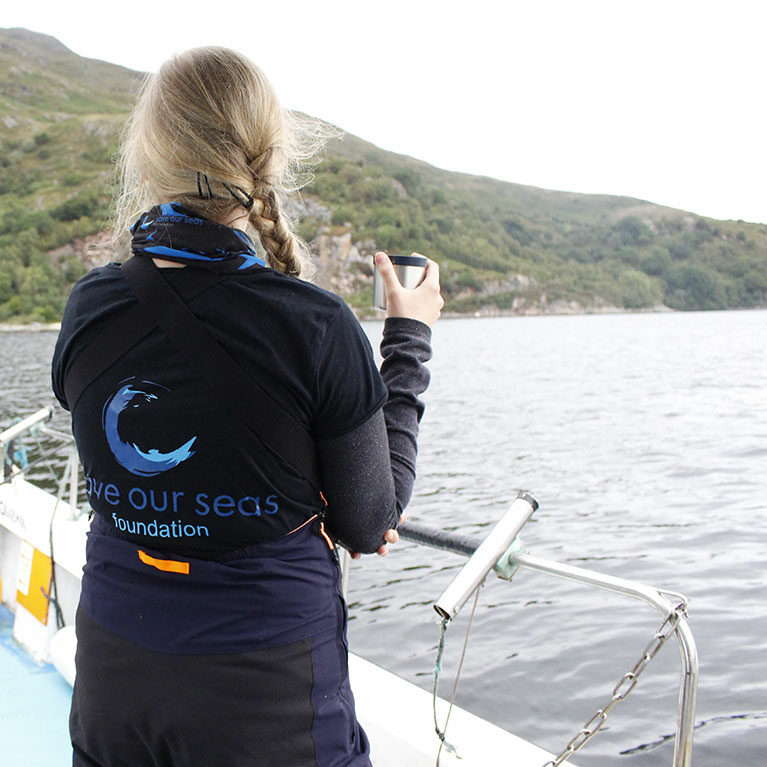Flapper skate family ties
Tanja is learning where the flapper skate moves along the last vestiges of its home range on the Scottish west coast and trying to understand how this affects its genetic diversity. To find out how its declining populations can survive, she is introducing the paternity test to the shark world and exploring whether mating partners, siblings or whole clans are commonly in the same area or if they can be found in different places.
Of all the different parts of the ocean, I have always felt most connected to the North Sea. It’s the place where my parents met, where my family went on holiday every year and where I searched relentlessly for fossilised sharks’ teeth on the beach. Although I’ve loved the ocean and its inhabitants for as long as I can remember, I never thought I would end up working in marine conservation. I decided to study biology just a few weeks before finishing school, mainly because I was fascinated by genetics. After taking part in an expedition to the Azores, I...


Family ties of critically endangered flapper skates and their implications for conservation management
The project aims to reveal the contemporary reproductive connections of critically endangered flapper skates inside and outwith a Marine Protected Area and gain insights into their movement ecology and philopatric tendencies by integrating Citizen Science data into a genomic analysis.
Though being an apex predator of impressive size and popular amongst anglers, the flapper skate is still quite a mystery. Living in the deep, investigating its movement between areas is a big challenge. Direct relatedness between individuals has been rarely used as information on movement ecology and connectivity, as a large sample set might be needed to find a sufficient amount of kinship pairs. With new technology in population genomics, the investigation of family ties between animals has now become easier and is emerging as a new tool in studying the ecology of elasmobranchs. This project will combine this tool directly with data derived from Citizen Science to enlighten the movement ecology of this critically endangered animal. As the project leader is directly working with the Scottish Natural Heritage, all results will be part of an evaluation of the efficacy of the MPA Loch Sunart to the Sound of Jura.
The flapper skate Dipturus intermedius has just recently gained status as distinct species, forming a cryptic species complex with the blue skate, which is listed as Critically Endangered due to immense population declines. In 2014, the Scottish Government implemented the Marine Protected Area “Loch Sunart to the Sound of Jura” which prohibits most fishing activities, but enables recreational catch and release angling of the flapper skate that is aiding in collecting data on the population. As an inhabitant of deeper waters, studying the movement ecology of the flapper skate is a challenge, but previous research with acoustic tagging could identify what appear to be residents, and a likelihood for a proportion of transient animals. However, as this tagging study was conducted only within the MPA and over a relatively small time period, there remains uncertainty on the range of movement and level of connectivity to populations outwith the MPA. Furthermore, movement might only connect distinct populations demographically. It is of high interest to identify if any migrants also reproduce, as genetic isolation could result in a loss of genetic diversity and therefore a reduced capability to adapt to a changing environment. Preliminary research of the project leader found lacking variability and geneflow in the mitochondrial DNA. Just recently kinship relations came into focus of scientists investigating the contemporary connectivity of elasmobranchs, e.g. in an investigation of full- and halfsiblings of the speartooth shark in different nursery areas. Former research at the University of Aberdeen was able to identify 8 kinship relations in a sample set of 177 flapper skate individuals (incl. 28 from the MPA). To gain more information about the population in the MPA, more individuals need to be included.
- Finding reproductive connections between animals inside the MPA regions and animals from outside; by that gaining knowledge on population admixture as well as life history.
- In combination with recapture data of tagged and photographed animals, evaluate if there are highly resident animals and clans inside the MPA
- Identify the state of the population by their genetic variability, inbreeding likelihood and number of breeders

